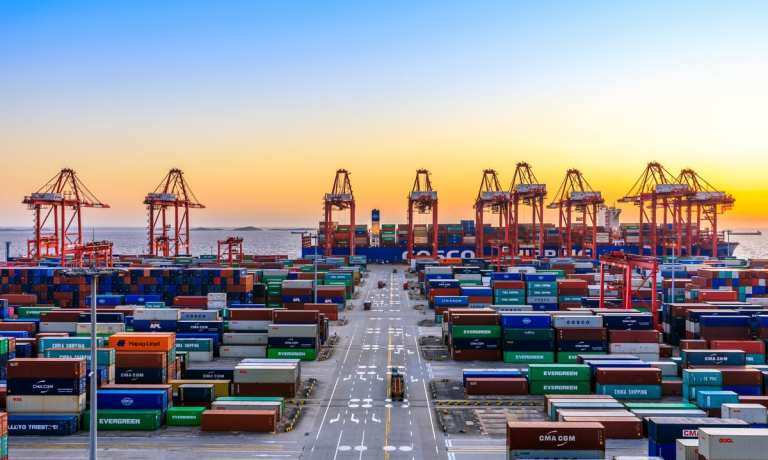Filling The Drayage Industry’s FinTech Innovation Gap

Despite an influx of FinTech innovation in logistics and trucking over recent years, the drayage space has largely been left out of the conversation of logistics and supply chain digitization.
As a bit of a niche space within the broader trucking and logistics market, drayage involves a complex web of business partners and moving parts, making it a particularly complicated space for technology platforms and FinTech solutions to step in, according to PortPro CEO and Founder Michael Mecca.
Having his own background in the drayage arena, Mecca said he understands the nuances and particular pain points of a variety of workflows — accounts receivable and B2B payments included. In a recent conversation with PYMNTS, Mecca explored some of those challenges that historically kept FinTech innovation at arm’s length for the drayage industry. Plus, he spoke about the industry’s struggle to modernize at a time when legislation threatens to create massive disruption for the market.
An Industry In Flux
Part of the complexity of the drayage space, which involves short-distance trucking in logistics (for instance, from an ocean port to a trucking terminal), is that there are many smaller players, making for a highly fragmented market.
Mecca explained that there are a variety of owner-operators in this space. Some professionals own their trucks but work under a trucking company, wielding its brand and insurance. This is similar to a trucking firm using an independent contractor. In other models, these owner-operators serve as their own trucking companies with their own insurance and authority to move freight that has been brokered to them — similar to a B2B transaction.
The current makeup of this field is shifting, according to Mecca, who said that more owner-operators are deciding to operate as their own independent businesses without having to forfeit a percentage of profits to other trucking companies.
There is potential for that trend to accelerate too. Mecca highlighted an evolving regulatory landscape where bills such as AB5 in California — currently in legal limbo — could drive more owner-operators to become their own businesses.
“It would shake everything up,” said Mecca, noting that for many professionals that do decide to operate as their own business, there are plenty of challenges and friction points — especially when it comes to getting paid. “You need to go and collect money from the customer you did work for, and you need to make sure you’re following procedures they set in place in order for you to get paid.”
Mobilizing The B2B Payments Web
Whether or not AB5 comes into effect, the drayage industry is opening doors for those that do wish to become their own businesses. Unlike other areas in supply chain and logistics, these business owners are often behind the wheel and on the go — a reality that led PortPro to introduce a mobile version of its drayOS solution. The mobile operating system aims to digitize and automate a variety of workflows, including customer collaboration, invoicing, collections and analytics.
B2B payments in this space can be particularly challenging, especially considered how fragmented the landscape is and how complex workflows can become. Lengthy payment terms and a high volume of required documentation set the stage for complexity, but it doesn’t end there.
“You need to consolidate that documentation together to calculate your charges accordingly. In drayage, it’s not just, ‘I’m going to pick up this container and deliver it, and it’s $1,000,’” said Mecca. “It might cost $500, then there is a fuel surcharge, plus other variables. If things are congested at the ports, I’m going to charge congestion fees. If I’m at a delivery location for too long, I’m going to charge you detention fees.”
Other factors, like overweight loads or hazardous material, create additional surcharges and plenty of room for error and dispute.
Modernizing An Overlooked Sector
In addition to the nitty-gritty challenges of B2B payments and other workflows in the drayage space, the industry has often lagged with digitization and modernization efforts. It’s a reality Mecca said has been exacerbated by the fact that drayage is often overlooked by FinTech innovators and technology platform solutions, even as related spaces, like over-the-road (OTR) trucking embrace digital disruption efforts.
The complexities of the market mean any FinTech disruptors must be intimately knowledgeable of this space.
But despite a FinTech innovation gap, the growth of new small owner-operator businesses stepping into the fold makes the need for digital, automated solutions even more imperative.
Mecca acknowledged that digital transformation is slow-going in the drayage market. Wire, manual ACH and paper checks remain common B2B payment methods, for instance, while paper documentation is still the norm for many owner-operators managing their accounts receivable.
“This is a slow-moving space,” said Mecca. “Adoption of new technology takes time.”
Yet by introducing solutions designed with the expertise required to solve drayage pain points, embracing platform integration and fostering an ecosystem within single solutions that can gain widespread traction, the drayage space can find itself well-positioned to embrace digitization and ease the biggest barriers for new owner-operators.